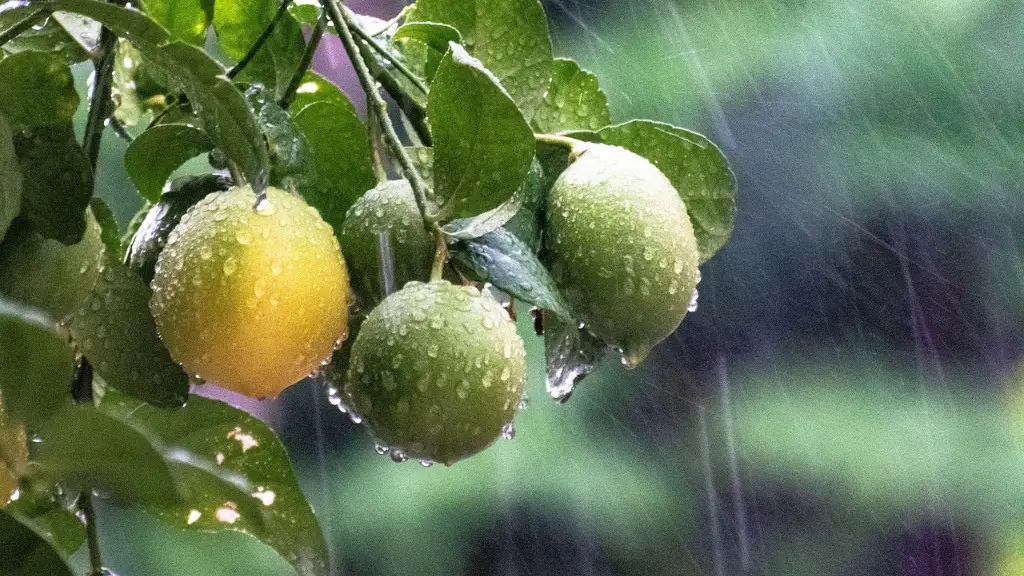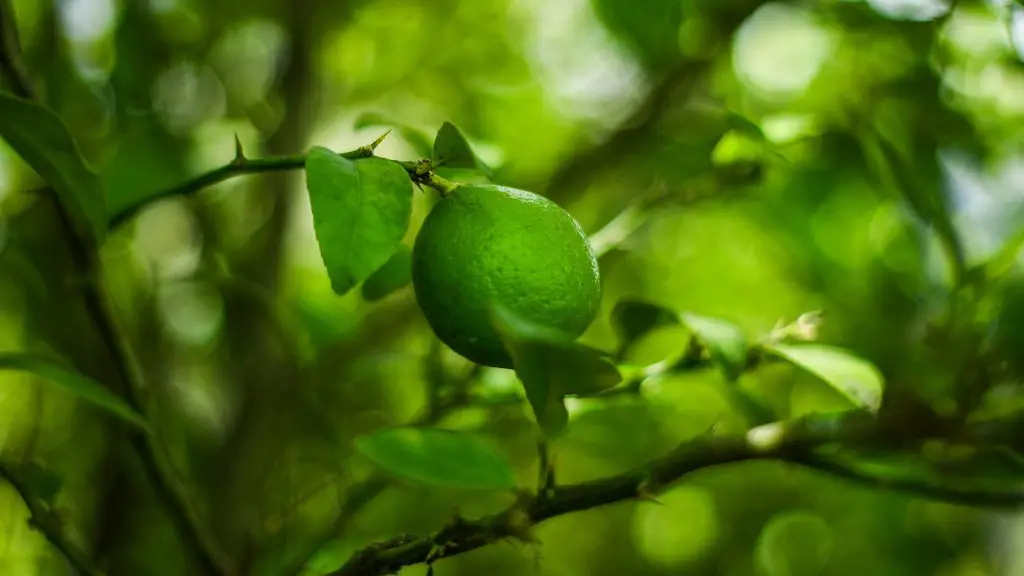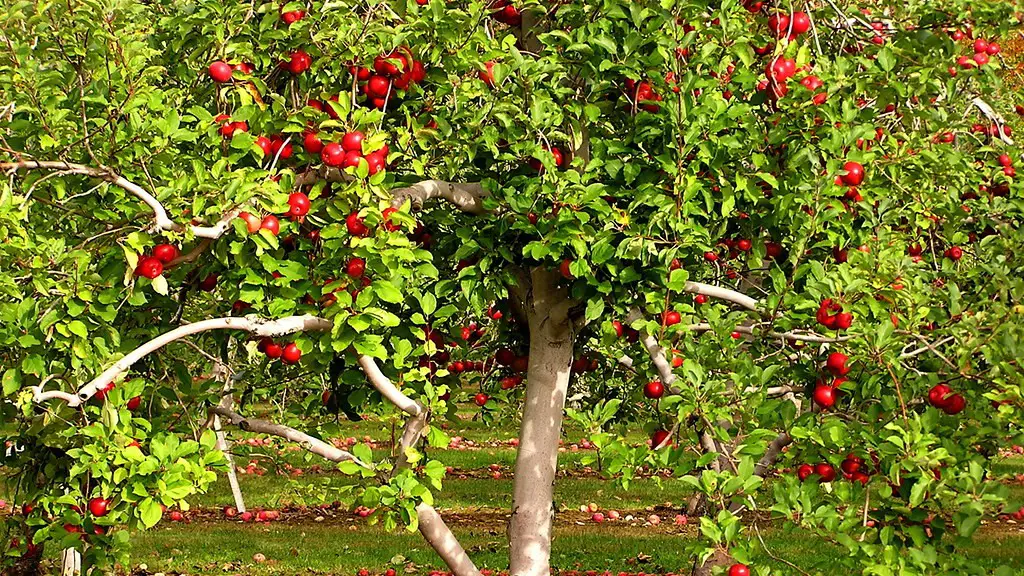When it comes to bringing lemon trees outside, the timing can be tricky to get right. If done too early then the tree might suffer from cold weather and won’t last long. If done too late then the tree may not be able to enjoy the generosity of the sun and not produce fruit. The best time to bring a lemon tree outdoors depends on the climate in which it lives. Generally speaking, it’s best to bring a lemon tree outside from April until October when temperatures are favorable. To be more precise, wait until around mid-April when the temperature is regularly above 10°C and there’s no more chance of frost for the year.
Be mindful of the weather during the process of bringing the tree inside and outside. If the temperature drops suddenly it’s best to bring the tree back indoors as the citrus trees won’t tolerate temperatures below 5°C. Similarly in summer, bring it back indoors during any heat waves. At the start of November, slowly transition the tree back indoors. A sudden shift from outdoor to indoor climate can shock a lemon tree, so take it easy.
When the tree is outdoors, ensure it gets enough drainage and sunlight. Citrus trees like 10 to 12 hours of direct sunlight per day, so don’t plant it in the shade. It’s also important to provide adequate drainage for your tree as it doesn’t like sitting in water and can subsequently develop root rot. Lastly, when the tree has moved outdoors, regularly water it and feed it an organic citrus tree fertilizer.
There’s nothing quite like growing a lemon tree in your own garden. With the right precautions, you’ll be able to reap the benefits of growing your own lemon tree. Just keep in mind proper timing when you’re deciding when to bring your lemon tree outside to ensure a happy and productive tree.
Placing the Lemon Tree Outdoors
When you are planning to bring the lemon tree outdoors, you should choose a spot in your yard that gets at least 6 hours of direct sunlight, and make sure the soil drains well. You should also pick an area that is sheltered from strong winds, which could damage the tree’s delicate leaves and branches. It is also helpful to use a stake or trellis to provide additional support for your lemon tree and help it become established in its new location.
Once you have determined the perfect spot for your lemon tree, you should transplant it carefully. Start by loosening the soil in the chosen area, then gently dig a hole large enough for the citrus root ball. Carefully remove the tree from the excess soil and transport it to the new area. Then slowly lower the citrus tree into the earth, ensuring that all of the roots are covered by the soil. Fill in the remainder of the hole with soil until the ground is level, providing sufficient water and then mulching.
When bringing a lemon tree outdoors, make sure to give it its own space. The roots could potentially grow too large, smother neighbouring plants and compete for the same nutrients and water.Preparing the Lemon Tree for Indoor Conditions
When the cold months approach, you should think about transitioning your lemon tree back indoors. You should begin this process early in the season so the tree has plenty of time to adjust gradually. The earlier you move the tree inside, the healthier it will be.
Before bringing the tree indoors start by trapping any pests that may be latched to it. Trim off as many dead leaves and branches as you can to minimise the number of bugs that get in your house. Give the tree a thorough soak outdoors, as it absorbs water more efficiently while outdoors. Once this has been done the lemon tree can be brought indoors.
When it’s time to bring the tree inside, position it near a south or west facing window, as these are the best spots for lemon trees to receive sunlight. Place the tree away from any air conditioners, heaters, drafts or furniture to avoid drying the soil out or stressing the tree. In addition, you may need to provide supplemental artificial light with a fluorescent light if the tree isn’t getting enough sunlight from its new spot.
When bringing a lemon tree indoors, it is important to keep the humidity levels in check. Lemon trees prefer humid conditions, so you should mist the leaves on the tree daily with a spray bottle and wipe off the dust which accumulates. You can also try setting a humidifier nearby.
Caring for a Lemon Tree Outdoors
Once you have planted your lemon tree in its new outdoor location and secured it with a trellis or stake, you should prune it to maintain its shape. Pruning is essential when caring for a lemon tree, as it helps control its size and shape while also promoting health and ensuring future harvest. Lemon trees don’t require heavy pruning, so it’s important to know the basics before getting started.
When pruning your lemon tree, start by removing any dead or damaged branches and weeds. Then proceed to prune and train the live branches so they are strong, upright and evenly spaced. After you have done the pruning, it is helpful to top off the tree with a thick layer of mulch. This will help protect it from any weeds and maintain the soil temperature and moisture level.
In order for the lemon tree to reach its full potential, it should be supplied with enough water. Citrus trees may be drought tolerant, but they still need consistent watering to produce a healthy yield. If you’re growing your lemon tree in a container, directly water it every time the top two centimetres of soil start to dry. If the tree is in the ground, water it every seven to ten days, depending on the climate.
The soil around the lemon tree should also be supplemented with generous amounts of fertilizer. When the tree is young, use a slow-release or organic fertilizer and supplement it with a water-soluble fertilizer every two months. Once the tree reaches maturity and is producing, use a fertilizer composed mainly of nitrogen.
Harvesting Lemons from Your Tree
When the time comes to harvest the fruits from your lemon tree, the first step is to identify when the lemons are ready to be picked. This is normally when the fruits start to turn yellow and are heavy when held in your hand. You can also tell if the fruit is ripe by gently squeezing it; if it is soft then it is ready to be harvested.
When harvesting lemons, avoid yanking or tugging at the tree as this will damage it. Instead, use a pair of sharp gardening shears to remove the fruits. Cut the fruit one centimetre away from the branch and discard any bad fruits. With lemons, it is important to keep them cool and dry. Collect the lemons in a container or box and cover it with a towel or sheet. Once you’ve harvested the lemons, make sure to store them in the refrigerator.
If your lemon tree has produced a large number of fruits, consider juicing and preserving at least some of them. Lemons can easily be frozen and will keep for up to three months in the freezer. Alternatively, try dehydrating the lemons for a delicious and aromatic snack.
Diseases and Pests that Effect Lemon Trees
When growing a lemon tree outdoors, it is important to be aware of potential illnesses and pests that may infect the citrus. Knowing the signs and symptoms of various diseases and pests is the first step to maintaining the health of a lemon tree.
The most common fungal diseases of lemon trees are caused by Phytophthora and stem canker. Phytophthora is identified by symptoms like yellowing and wilting of leaves and stunted growth, while stem canker is characterised by the presence of sunken, dead patches or discoloured lesions on the trunk or branches.
The most common pests that feed on citrus trees are aphids, mites, and scale insects. Aphids appear on the tips of the leaves and shoots and can be recognised by their sticky secretions that appear on the leaves. Mites feed on plant sap and can be identified by their brownish/blackish specks on the leaves. Scale insects are also prevalent on lemon trees and can be easily identified by looking for disc-like objects on the underside of the leaves.
If your lemon tree gets infected by any of these pests or diseases, you can treat them with a combination of manual, chemical and biological methods. Start by cleaning all the branches and leaves with a damp cloth and rubbing alcohol, then removing any affected leaves or branches. You can also use natural methods such as neem oil to combat fungal diseases and pests. Chemical methods like insecticides can also be used, but they should only be employed as a last resort.





